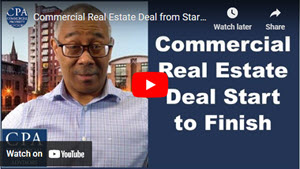Last year, we bought via short-sale a 200 unit apartment rehabilitation project that was only 20% inhabited at the time of closing. The entrance of the property is positioned on a very busy street and has numerous decent sized retail shops attached to the building. The shops are entirely occupied and doing fairly well. This is apparent with all the car circulation and overcrowding in the parking lot.
With everything going on throughout the apartment’s all-encompassing rehab, we let the retail part of the project run itself and did not give it any attention. We thought, it’s only 5 shops and there are 6 acres of dreadful apartment building to deal with. That’s logical, right?
During due diligence this past year, we went over rental rates of all of our apartment’s competition, but did not go over our retail rate competition because we reckoned it’s only 5 shops. Those renters were paying around $2 per sq. ft. and we paid their water every month. After we began to catch up with the apartment rehabilitation, we decided to do a market survey for comparable retail shops. What we discovered made us unbelievably happy! First off, the retail rent hadnt been raised since 2002. The standard rate is $7 per sq. ft. Next, the water ought to be sub-metered, but nobody thought it was a big deal for only five shops. Wow, were we mistaken!
Once we increased the rent on the five shops to $6 per sq. ft and correctly sub-metered their water (which saved us $5,000/month), we saw our net operating profits on those shops alone go up by $160,000 per year. If we do some fast math here: the area that the building is located on is certainly at an 8 cap. So, if we divide our new additional $160,000 net income by our 8 cap, we get an amplified property value of $2,000,000!! We just produced our own bailout money!! A lot of it!!
The moral of the story: In commercial real estate, EVERY single dollar is important. It’s all about the profits. To be specific, it’s all about the net operating income, or also referred to as “NOI”. If the NOI goes up, the dollar value of the property goes up. It’s that easy. As the NOI goes down, so does the property value. It’s that easy. This is of course assuming that the area’s cap rate remains decently level and unchanging. Here’s some super easy math in case you would like to test it out on your own business deals or property:
Since cap rate = NOI divided by sales price, we can flip this math formula around and find that sales price = NOI divided by the cap rate. Let’s substitute “sales price” for “added value”. So, we get “added value” = increase in NOI divided by the cap rate.
3 Ways to Make Your Own Bailout Money:
1: Raise the rent even if it’s a small amount. On an 8 cap property, for every $100 of growth in the NOI per year, your property income goes up $1250!! This is not complicated at all! Find ways to grow your earnings by billing back tenants for garbage pick-up, putting in new laundry equipment and by charging extra,
2: Reduction in overheads will increase your NOI. Find ways to lessen your operating expenses such as sub-metering any utilities, having your property insurance re-quoted, shrink tenant turnover, or bring contracted repairs in-house.
3: improvement on the tenant profile and enhancing the properties beauty, you can actually force your lower cap rate to decrease. A lower cap rate inevitably raises your property value if your NOI is unwavering.
The point I am trying to make is…real commercial real estate prosperity is made in making the most of what’s left after you pay all the operating costs except the mortgage.
Until next time…
![bailout-money-bag-sign-29164659[1]_opt](http://www.peterharrisrealestate.com/wp-content/uploads/2009/04/bailout-money-bag-sign-291646591_opt.jpg)



